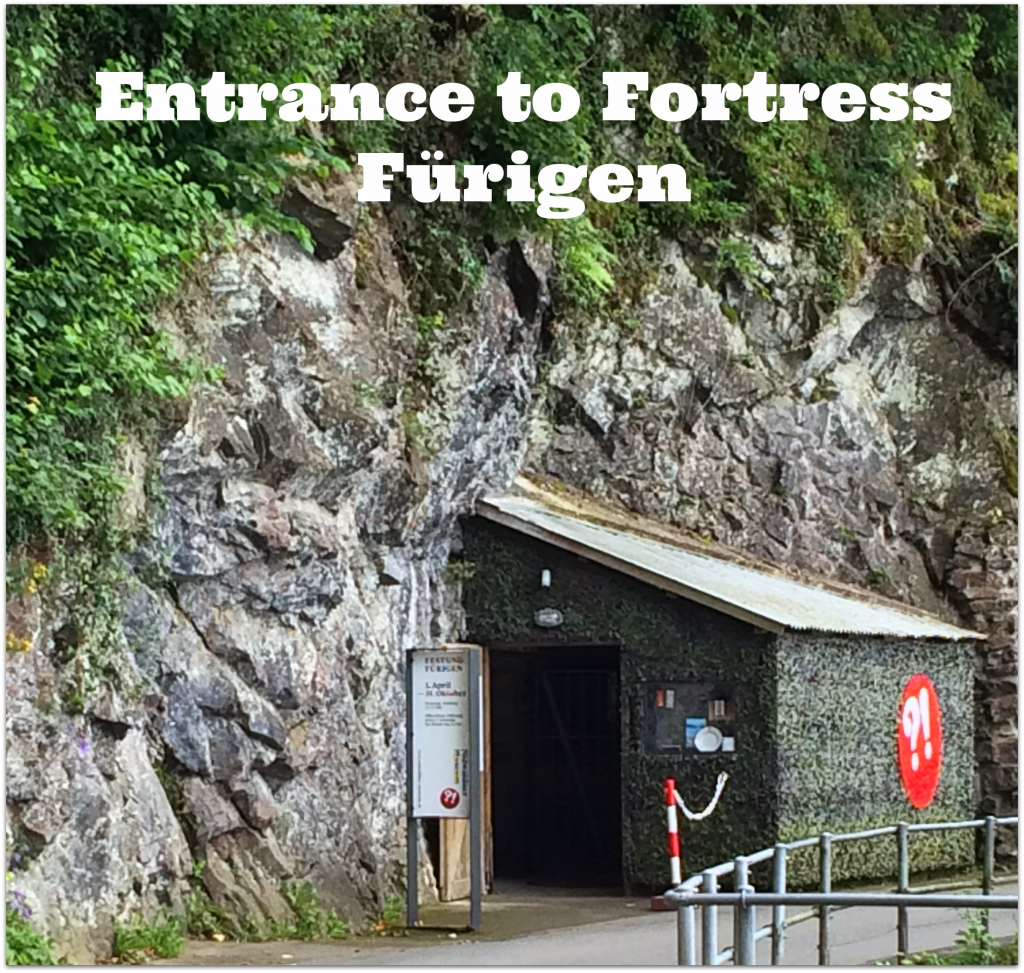Secret Swiss Bunker: Fortress Fürigen through Google Glass
 On Sunday, August 24, 2014, Tim and I visited Fortress Fürigen (Festung Fürigen) in Stansstad, Switzerland. The fortress used to be a part of the secret Swiss defense system of bunkers and fortresses, which the government used during World War II and the Cold War.
On Sunday, August 24, 2014, Tim and I visited Fortress Fürigen (Festung Fürigen) in Stansstad, Switzerland. The fortress used to be a part of the secret Swiss defense system of bunkers and fortresses, which the government used during World War II and the Cold War.
Today, you can visit Fortress Fürigen as a museum.
In this post you will find a brief history of Fortress Fürigen as well as a video that tours the interior of the bunker, which I took with Google Glass.
Brief History of the Fortress
From the outside we nearly missed Fortress Fürigen, which is concealed inside a rock face overlooking Lake Luzern. We entered the fortress from a camouflaged wooden shed that thankfully had a large, red open flag flying outside of it; without the flag we might have walked passed and missed it.
In 1941, the Swiss built a series of bunkers like Fortress Fürigen to combat a Nazi invasion. The invasion plan called for the Swiss government to fall back to a secret bunker at Brünig in the Berner Oberland, and for the Swiss troops to fall back from the border regions into alpine strongholds like Fürigen.
The Swiss built Fortress Fürigen to protect roads and rail lines that led from Luzern and Zürich into the Berner Oberland. Fürigen stands as a small example of a hidden Swiss fortress as it could house and feed only about 100 people for three weeks.
After World War II, the Swiss renovated its fortresses to defend against the Soviet Union and nuclear war. When the Cold War ended in 1990, the government decommissioned Fortress Fürigen and opened it as a museum.
The fortress extends 200 yards inside the mountain. The tour includes the troops’ living and dining quarters, an ammunition room, sickbay, and two concealed gun rooms.
Google Glass and Fortress Fürigen
Fortress Fürigen seemed like it would be a really neat place to visit and I knew there would be no way to capture its elaborate tunnels with my camera. So, rather then take pictures, I seized the opportunity to experiment with Google Glass. The 28:00 minute film below is the footage I took with Glass.
The occasional narration you hear in the background comes from Tim. I tried to keep bystanders out of the video as much as possible.
What Do You Think?
Do you have any suggestions on how I might improve my films through Glass?
Do you have suggestions for other ways I could use Google Glass videos to capture historic places?
*Please note that Glass does not have the capability to focus or add light to its photos or videos.